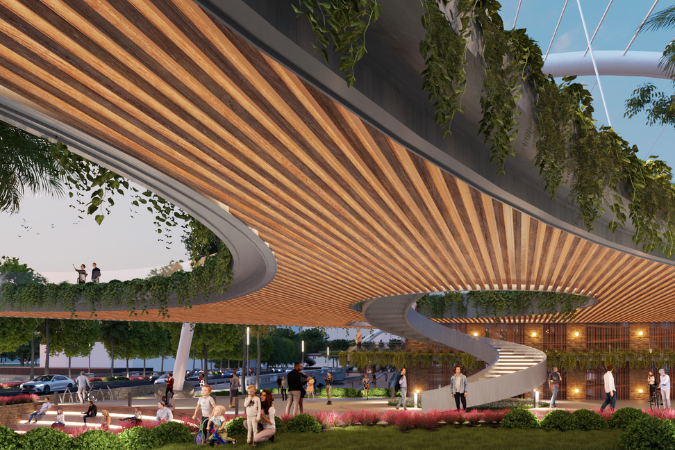5 Ways Bridges Help Connect Cities & Communities
Written By AD&V®ABOUT THE AUTHOR | AD&V® is dedicated to advanced and energy-efficient sustainable architecture & interior design that enhances people’s experience of the world and improves their lives.
BRIDGES HAVE BEEN CRUCIAL IN CONNECTING CITIES AND COMMUNITIES THROUGHOUT HISTORY.
They are critical links between urban areas and communities, fostering economic growth, cultural exchange, and transportation efficiency.
See how bridges help connect cities and communities and the impact they have on the development and well-being of societies:
1. ENHANCE TRANSPORTATION INFRASTRUCTURE
One of the most significant benefits of bridges is their ability to improve transportation between cities and communities. Bridges often provide the most direct and efficient route for vehicles, pedestrians, and cyclists to travel between different areas, reducing travel time and fuel consumption.
According to studies, bridges can dramatically reduce traffic congestion, leading to a more efficient transportation system overall.
2. PROMOTE ECONOMIC GROWTH
The increased accessibility provided by bridges helps to create new opportunities for businesses to grow and expand. This has a ripple effect on the local economy, as more jobs are created, and more money flows into the community.
Bridges also act as catalysts for tourism, allowing visitors to explore diverse regions and contribute to local economies. By connecting cities and communities, bridges facilitate the movement of goods, services, and individuals, increasing economic activity and growth.
3. IMPROVE SAFETY
Bridges are essential in improving safety by providing secure passage over natural barriers, such as rivers, and artificial obstacles, like highways and railroads. Bridges designed for pedestrians and cyclists can also contribute to safer urban environments by reducing the need for people to cross busy roads.
A United Nations report on global road safety emphasizes the importance of infrastructure improvements, such as bridges, to reduce road traffic injuries and fatalities. Bridges provide a safe and reliable way for people to access cities and communities while reducing the risk of accidents.
4. FOSTER CULTURAL EXCHANGE
Bridges can foster cultural exchange by connecting cities and communities with different cultures and traditions.
They bridge physical and metaphorical divides, promoting interaction and exchange between varied neighborhoods, cities, and regions. Bridges unite people from diverse backgrounds by facilitating movement and connectivity, fostering mutual understanding, cultural exchange, and social cohesion.
Since they help create opportunities for shared experiences, they promote a sense of unity and belonging among communities that may have previously been separated and enrich the cultural fabric of connected communities.
5. FACILITATE SOCIAL INTERACTIONS
Beyond their utilitarian functions, bridges often become iconic symbols of cities and landmarks. Architecturally stunning bridges, such as the Golden Gate Bridge in San Francisco or the Tower Bridge in London, attract tourists worldwide, contributing to local economies and cultural exchange.
These bridges become iconic structures that represent the identity and spirit of a city or region, evoking pride among residents and visitors alike. They serve as public spaces for leisure, recreation, and community events, enhancing the livability and attractiveness of the areas they connect and facilitating social interactions.
CONNECTING US TO THE WORLD AROUND US
Bridges have played an essential role in the development of cities and communities around the world. They serve as vital links that connect cities and communities, fostering economic growth, cultural exchange, and social integration.
Since bridges help to enhance transportation infrastructure, promote economic development, foster social cohesion, and ensure safety, they play an indispensable role in shaping the fabric of societies. By investing in well-designed and well-maintained bridges, cities and communities can strengthen connections, leading to more inclusive, prosperous, and resilient urban environments.

